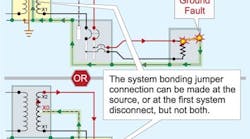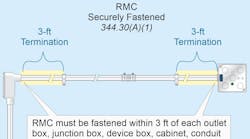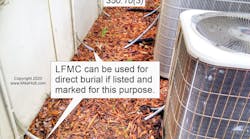Q. What are the bonding requirements for transformers?
A. As noted in 250.30(A) of the 2008 NEC, a system bonding jumper must be installed at the same location where the grounding electrode conductor terminates to the neutral terminal of the separately derived system; either at the separately derived system or the system disconnecting means, but not at both locations [250.30(A)(1)].
If installed at the source, the system bonding jumper must connect the neutral conductor to the equipment grounding conductor of the metal transformer case. If installed at the first disconnecting means, the system bonding jumper must connect the neutral conductor to the equipment grounding conductor of the metal disconnecting means enclosure.
For clarification purposes, a system bonding jumper is a conductor, screw, or strap that bonds the metal parts of a separately derived system to a system neutral point [250.2]. It's sized to Table 250.66 in accordance with 250.28(D).
Danger: During a ground fault, metal parts of electrical equipment, as well as metal piping and structural steel, will become and remain energized, providing the potential for electric shock and fire if the system bonding jumper isn't installed.
If the separately derived system and the first disconnecting means are located in separate enclosures, a supply-side equipment bonding jumper must be run to the secondary system disconnecting means. Where the supply side equipment grounding conductor is of the wire type, it must be sized in accordance with Table 250.66, based on the area of the largest ungrounded secondary conductor in the raceway or cable. This conductor is not required to be larger than the derived circuit conductors [250.30(A)(2)].
Where the system bonding jumper is installed at the disconnecting means instead of at the source, the following requirements apply:
- Sizing for single raceway. Because the secondary neutral conductor serves as the effective ground-fault current path for ground-fault current, it must be routed with the secondary conductors and sized not smaller than specified in Table 250.66, based on the area of the secondary conductors.
- Parallel conductors. If the secondary conductors are installed in parallel, the secondary neutral conductor in each raceway or cable must be sized not smaller than specified in Table 250.66, based on the area of the largest ungrounded conductor in the raceway or cable. In no case is the neutral conductor permitted to be smaller than 1/0 AWG [310.10(H)].





